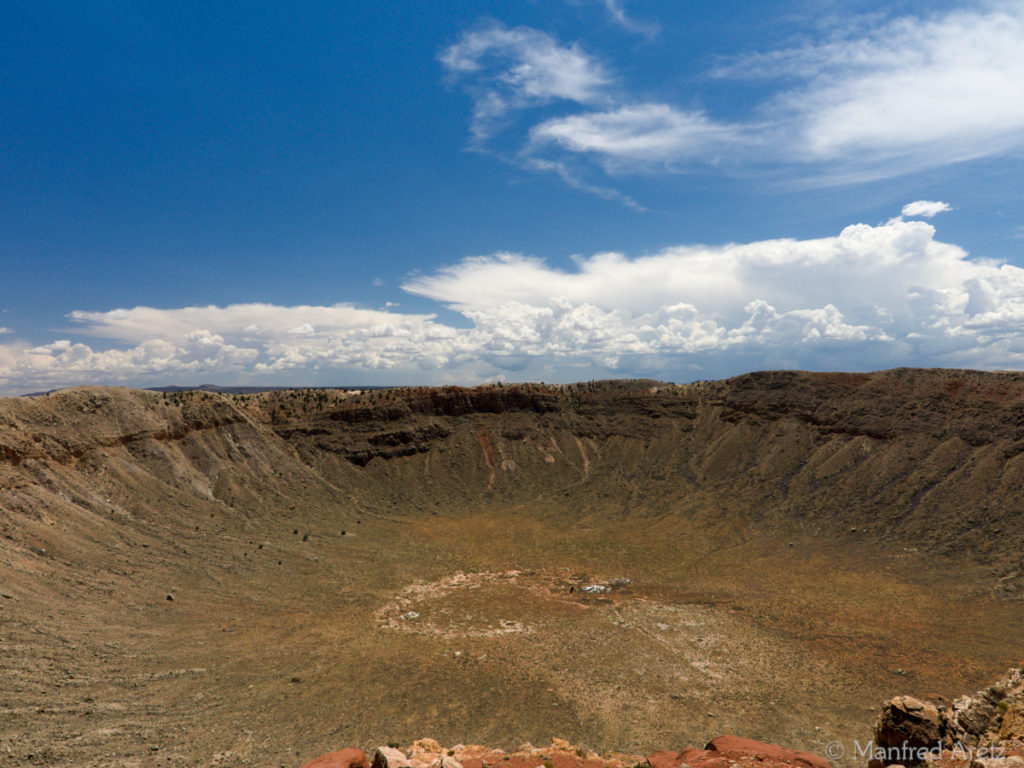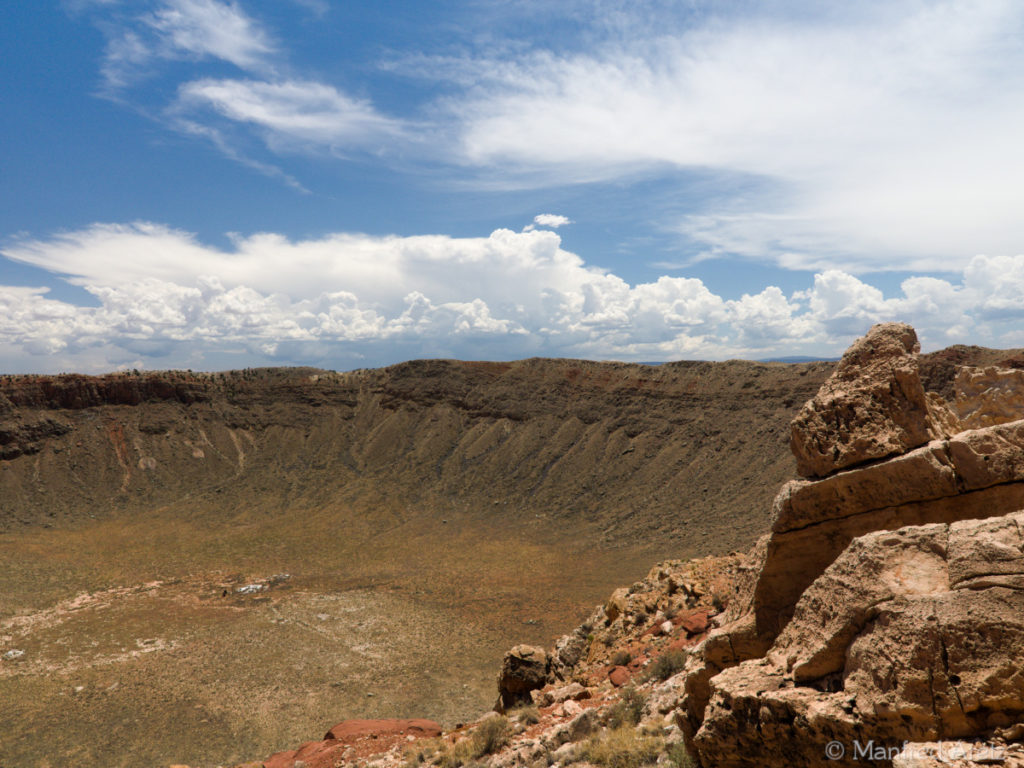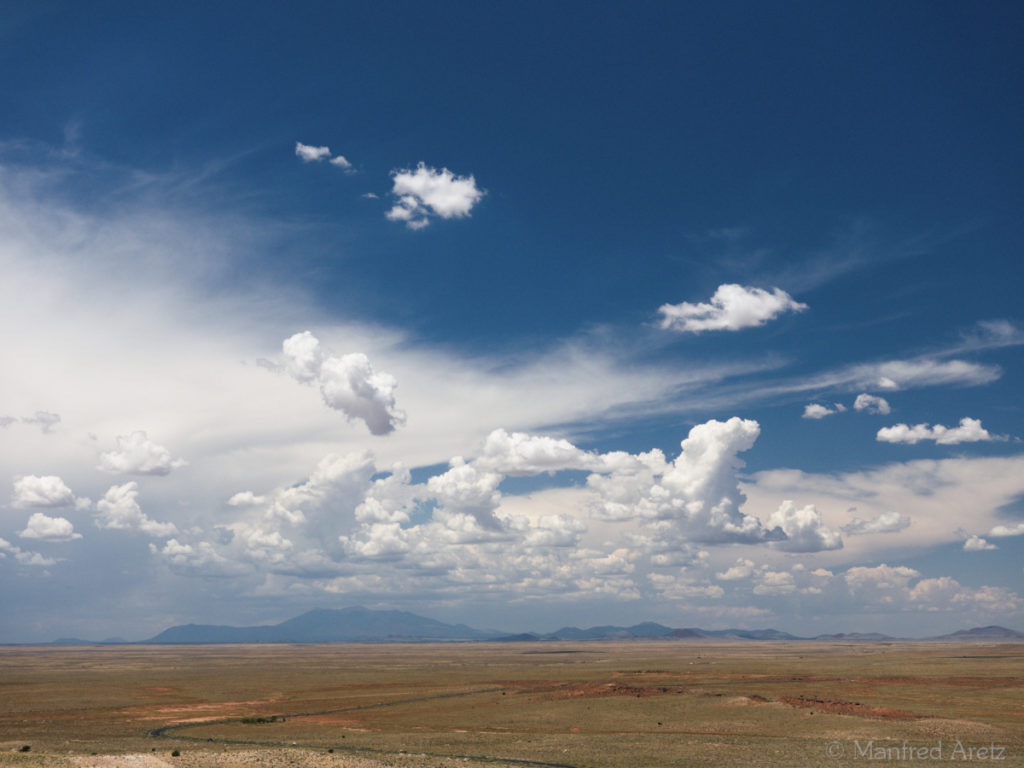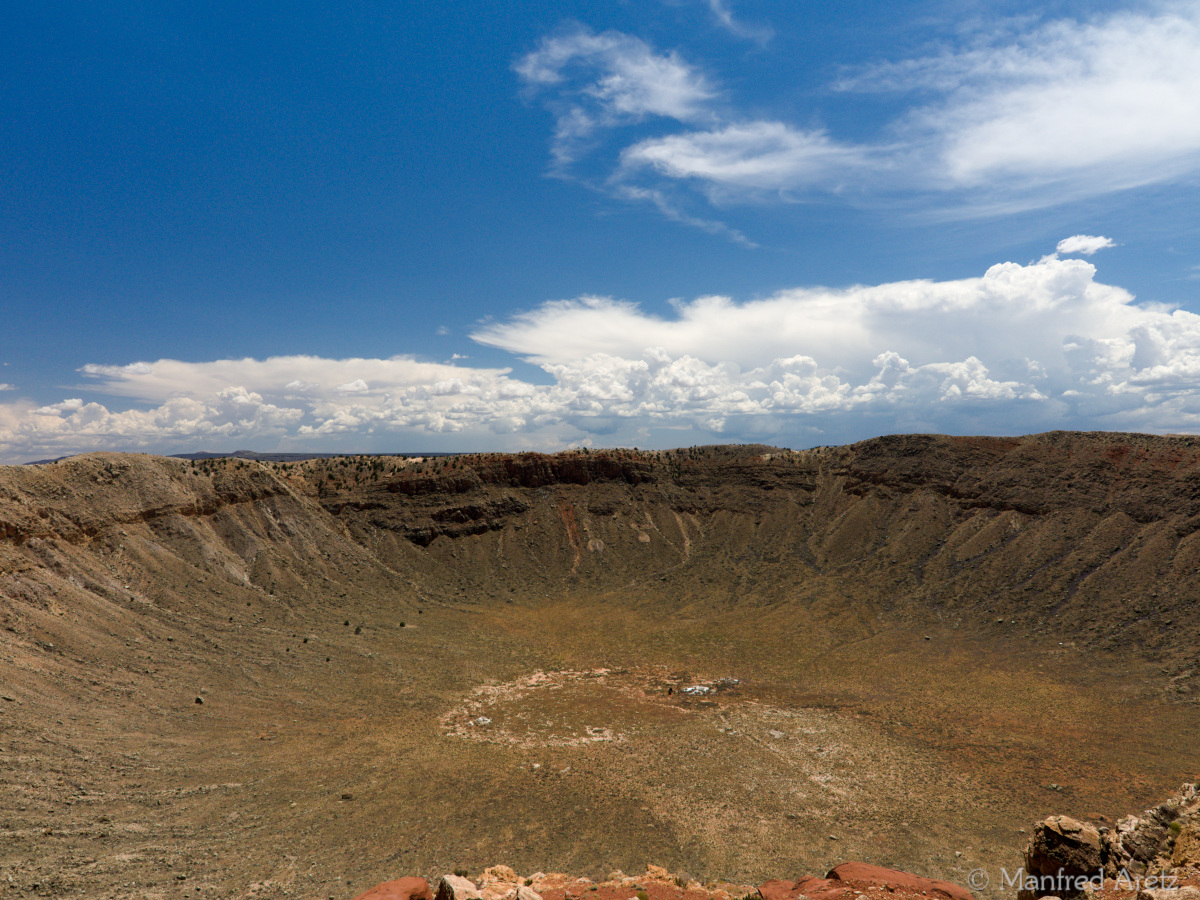Arizona, USA – July 2017
The impact of a meteorite about 50,000 years ago caused this crater. It has a diameter of about 1,200 m and a depth of 180 m. It is surrounded by a wall that rises about 30 to 60 m above the plateau. The meteorite consisted mainly of iron, had a diameter of 45 m and weighed 300,000 tons.


In 1871 the crater was discovered by European settlers and geologically investigated shortly before the turn of the century. It was first thought to be an impact crater, but no traces of iron could be found inside, so that it was assumed to be a form of volcanism. At the beginning of the 20th century, Daniel Barringer, who did business in mining, learned about the theory of a meteorite impact. Hoping to find large amounts of iron and nickel there, he secured a claim on the crater, but found no metals either. In 1960, further research showed that the crater was indeed formed by a meteorite impact, but that the meteorite itself was almost completely evaporated.
The crater is still privately owned and marketed as a tourist attraction.

View from the crater rim to the northwest over the San Francisco Volcanic Field. This is a field with more than 600 volcanoes. The cause is assumed to be a hotspot over which the North American plate moves westwards. The most recent eruptions were only 800 years ago. On the left is the stratovolcano “San Francisco Mountain”, whose highest peak “Humphreys Peak” is 3,850 m high and the highest point of Arizona.
